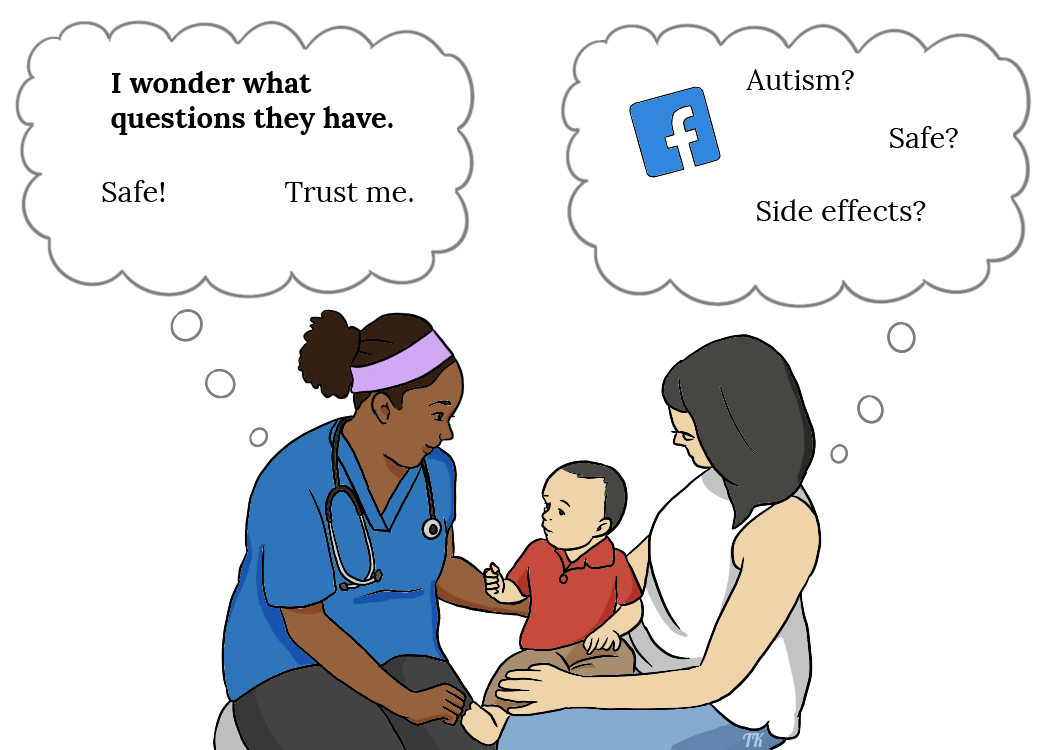Effective Communication

When communicating with a client, it is best to focus your responses on the specific questions or concerns rather than overwhelming the client with too much information. Image 5.1 demonstrates the disconnect that can exist between provider and client priorities and perceptions. It has been well-documented that merely correcting misinformation with more information may not be an effective strategy to increase vaccine uptake. Health professionals should avoid strategies that may reinforce misinformation, such as handouts that describe vaccine myths, repeating misinformation to parents, or using elaborate arguments to contest misinformation (Lewandowsky, Ecker, Seifert, Schwarz, & Cook, 2012). Spending too much time talking about myths can strengthen the myth for the client (McClure, Cataldi, & O’Leary, 2017). Instead, health professionals should invite clients to have healthy skepticism towards vaccine hesitant sources, to focus on facts, and to keep their language simple and clear.
Health professionals are the most trusted advisor and influencer of vaccination decisions. It is important that you have the knowledge, attitude, and skills to work with clients who have questions about vaccines and it is important to understand and acknowledge the client’s concerns. Effective communication is the best way for health professionals to address vaccine hesitancy. Always speak positively about vaccination. If a health professional appears unsure about vaccine safety or cannot explain why vaccination is important, you can contribute to the client’s hesitancy. Here are some tips (Table 5.1) for effectively communicating with all clients about vaccines. See also Video Clip 5.2 for a recreation of a discussion between the healthcare provider and parents displaying vaccine hesitancy.
Table 5.1: Communication Tips to Address Vaccine Hesitancy
| Communication Tip | Pointers |
|
Adopt a client-centered approach
|
|
|
Respect difference of opinion about immunizations
|
|
|
Represent the risks and benefits of vaccines fairly and openly
|
|
|
Use clear communication informed by current evidence-informed approaches
|
|
Video Clip 5.2: Health Professional Discussion with Parents who have 2-month old child
Attribution Statement
Parts of this section are adapted from Page 5: Canadian Immunization Guide: Part 1 – Key Immunization Information by the Government of Canada and are reproduced under non-commercial conditions.

